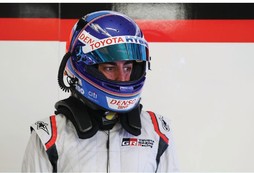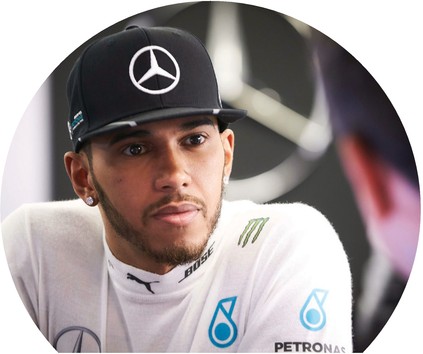
Fernando Alonso will race a Toyota TS050 Hybrid this year, and not just at the Le Mans 24 Hours. The McLaren Formula 1 driver will contest the full 2018/19 World Endurance Championship superseason with the Japanese manufacturer. That’s presuming there are no clashes between the three events in 2019 and next year’s F1 calendar. But there aren’t any conflicts this season, because the WEC has changed its one date that did fall on a Grand Prix weekend.
Moving the Fuji round to avoid a clash with the US Grand Prix in Austin has been controversial, and even viewed as cynical in some quarters. But it is a clear indication of the importance of the arrival of a two-time F1 world champion in a series that needs an important story line in the wake of the disappearance of first Audi and then Porsche from the LMP1 class at the front of the field.
The shift of the Fuji date is contentious because it has already been changed once. The original calendar listed the Fuji 6 Hours on the same weekend, October 13/14, as the Petit Le Mans round of the IMSA SportsCar Championship in North America.
A clamour from WEC drivers who were working on deals for the long-distance rounds that make up IMSA’s North American Endurance Cup resulted in it being moved back a week shortly after the original calendar was announced last year.
The desire to accommodate both Alonso and his WEC employer, which owns and runs the Fuji circuit, has resulted in a volte face. It comes at a time when the WEC and its promoter, the Automobile Club de l’Ouest at Le Mans, are trying to deepen a long-standing relationship with IMSA: they are lobbying the governing body of North American sports car racing to adopt the new LMP1 rules they are planning for 2020/21.
WEC boss Gerard Neveu has steadfastly defended the U-turn, insisting that it was necessary to “protect the interests of the championship”.
“How can you imagine having someone like Alonso in your paddock, racing for Toyota, and saying that we are going to Japan without him?” Neveu said. “Fernando wants to fight for the world championship; he cannot miss one race. It was logical.
“When you take a decision like this, you know always some people will be happy and some will be unhappy. It made sense for us to do it and I am very sorry for drivers who have a clash.”
He pointed out that IMSA knew what having a driver of Alonso’s profile on the grid meant. The Spaniard, of course, contested the Daytona 24 Hours IMSA opener in January with the United Autosports team co-owned by McLaren boss Zak Brown. His presence brought the race to the attention of a whole new audience.
Neveu raised the hope that the date of Petit, which falls a week later than usual, might be able to change. But a matter-of-fact statement from an IMSA spokesman ruled that out.
“The WEC did ask IMSA to change the date of this year’s Motul Petit Le Mans, and IMSA did respectfully consider this request and explored doing so,” he said. “Due to some factors such as television coverage, IMSA’s year-end banquet on the same weekend, and competitor and manufacturer logistics already being in place, it was determined there were too many hurdles to overcome to move the event.”
A raft of WEC drivers who have deals to race in the NAEC events have hit out at the date change. Ganassi WEC driver Olivier Pla, who is signed with the Extreme Speed Motorsports Daytona Prototype international squad for the IMSA enduros, suggested that the move wasn’t “nice and wasn’t fair”.
“When there was a clash on the first version of the calendar, we went to the WEC and asked them to change it. When they did, I went back to them and thanked them,” he said. “I understand that they have done it for Alonso, but they have put a lot of drivers, maybe as many as 10, in a difficult situation.”
Bruno Senna, Nicolas Lapierre and Harry Tincknell are among the high-profile WEC drivers with additional IMSA rides. Then there are the factory GT drivers who join the IMSA series for the long races. Gianmaria Bruni, for exampled, had been set to race at Petit.
Alonso’s pulling power is just too important to the WEC to ignore in its hour of need, as is its on-going relationship with Toyota. The Japanese manufacturer is a major player in the rule-making process for 2020/21. It has made no guarantee to continue beyond the superseason, but it is the nearest the WEC and Le Mans have to a manufacturer with a commitment to LMP1.
Its signing of Alonso can be interpreted an indication of a commitment to the WEC. It knows that if it is winning as it pleases against a band of P1 privateers, the profile of a championship that has hung its hat on the fierce battles between itself and Porsche and Audi will undoubtedly suffer.
The gaze of the world’s media will be on the WEC courtesy of Toyota’s signing of one of the best Formula 1 drivers of his generation. His bid to complete the unofficial triple crown of motor sport by adding Le Mans and Indianapolis 500 victories to his pair of Monaco Grand Prix wins adds another dimension to the story.
But Alonso’s presence in the Toyota Gazoo Racing squad will be a double-edged sword for arguably the biggest underachiever in the history of Le Mans. Toyota has never won the 24 Hours, but it has come close multiple times. It was six minutes short of victory in 2016 and should have won last year and in 2014, the year it took the WEC drivers’ and manufacturers’ titles.
The problem for Toyota should it finally notch up a Le Mans victory will be one of perception. What will the headlines scream should Alonso triumph together with team-mates Sebastien Buemi and Kazuki Nakajima? ‘Toyota wins Le Mans!’ or ‘Alonso wins Le Mans!’ That’s any easy one to answer.
And what if the Alonso car doesn’t win? Or more to the point, what if the TS050 shared by Kamui Kobayashi, Mike Conway and Jose Maria Lopez wins ahead of the sister car, and narrowly so. At some point in the race, Toyota would have to tell its drivers to hold station if they are running one-two at the front of the field. Alonso, the consummate pro that he is, would understand the need for that, but would the watching world?
Alonso’s arrival in the WEC in pursuit of the triple crown, something previously achieved only by Graham Hill, has clearly overridden any such fears. It’s the same at the WEC. The boost he will provide is more important than keeping its regular drivers happy, and perhaps even than keeping its transatlantic accord with IMSA on the rails.

